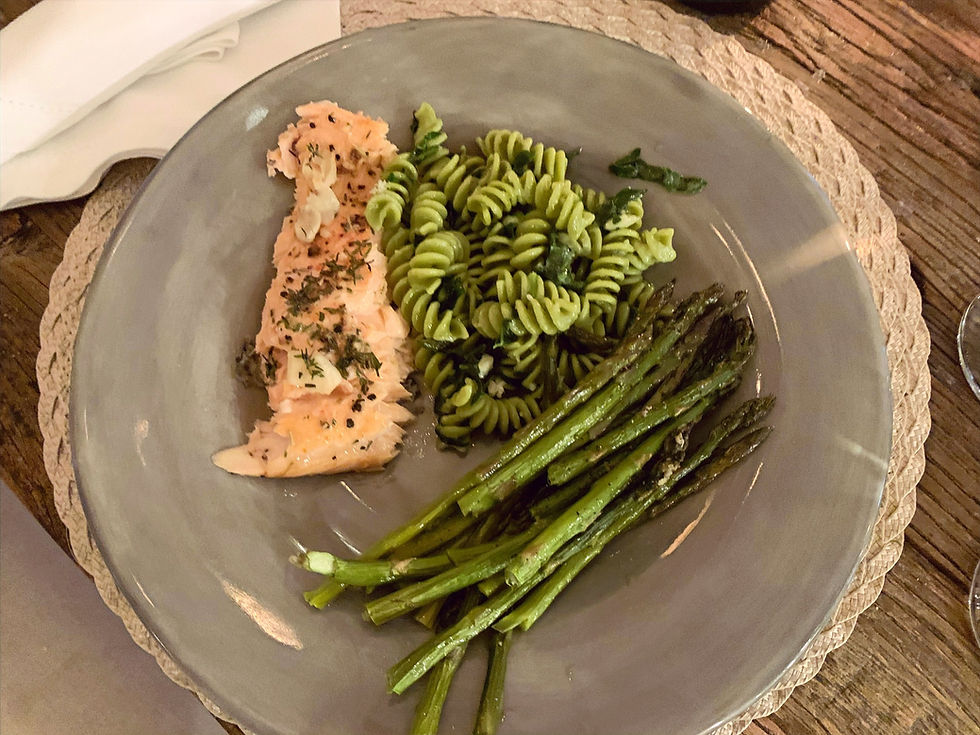Produce “Seconds” are the Cinderella Story of this Peach Marmalade
- Jim Hoehn

- Sep 2, 2020
- 3 min read
Did you know an entire market exists for ugly produce? Bruised, flawed or oddly-shaped, “seconds” are the fruit and vegetable stepchildren that grocery stores won’t buy from farmers and never make it to the pristine displays in produce sections. The Washington Post recently did a story about this. The real secret is that ugly “seconds” taste just as good as their prettier siblings at far less cost, if you can find them.
Every spring and summer for more than forty years, I have made jams, marmalades and pies from scratch using a variety of fruits from local farms. Summer mornings spent in orchards just beyond the suburbs, searching for a cluster of perfect blueberries or strawberries that someone else passed by felt like finding gold. Then taking those findings and making a delicious homemade treat has always been one of the best parts of my year.

When Covid cases began to decrease in late spring, I drove out to a local farm assuming I was the first person who thought fruit picking was the perfect socially-distanced outdoor activity. Disheartened, I saw what appeared to be a few hundred people in the field picking berries, too close, and decided it wasn’t worth risking my health. I was saddened to pass on this annual activity.
Peach season arrived in late July, and I learned that “seconds” could be ordered from the farm already picked and bagged. Driving home with nearly 30 lbs. of yellow and white peaches in my car - at a fraction of the price I might add - felt like I had discovered a gem. Not only for cooking, the leftover “seconds” tasted just as sweet as the peaches we ate in our youth, and the supposed flaws were so minor they were great for whole-fruit snacking.
Like past summers before Covid, I went to work making a delicious peach marmalade, combining the peaches and oranges with a touch of brown sugar for depth of flavor. This year the marmalade tasted even better, because they were made with what was considered second-best fruit, throw-aways even. But despite that, they yielded a delicious marmalade that sings of summer. The Covid Quarantine, or whatever it is called at this point, has taught me many lessons. As we postpone haircuts and care less about our appearance, perhaps we are “seconds” versions of ourselves this year: a little less shiny, but still just as good if not better. I can’t wait for next Spring (post Covid) when strawberries, black raspberries, blueberries and eventually peaches start calling my name for the next batch of jams, pies and marmalade.
Recipe for Peach Marmalade
Makes 8 jars
See note below about sterilizing the canning jars. Mary Ann inquired whether there’s a risk of botulism when canning. I explained that a proper sterilization process ensures any homemade canned good can last for months. She ended up loving the marmalade, but I did notice she first gave her dog a little before trying it herself. So far, everyone has survived.
Ingredients
8 cups fresh peaches, washed, peeled, pitted and diced
2 cups granulated sugar
1 cup light brown sugar
Rinds from 1 lemon and ½ an orange, sliced into thin, ½ inch strips. Be sure to only get rind, not pith
1 packet of Sure-Jell pectin
8 standard 8 oz canning jars (made of tempered glass with two-part lids)
1 square of paraffin canning wax (optional)
1. Sterilizing the jars is a critical step. First, wash jars and lids with soap and water then place glass jars (not lids) in a large pot of water so they are fully submerged. Bring water to a full boil for 10 minutes. Remove with tongs and set aside to air dry.
2. Place lemon and orange rinds in medium sauce pan and cover with ½ cup water. Bring to a boil, cover then turn down heat to sauté in water for 20 minutes. You want rinds cooked way down until very soft.
3. In a large pot, combine lemon and orange mixture including the remaining water, peaches, pectin and ½ cup of granulated sugar. Stirring constantly, bring to a full boil, then let it boil for 1 minute. Add remainder of all sugars. Stirring constantly, bring mixture back to a full boil for a second time. Again, let it boil for 1 minute.
4. Remove from stove and skim off any foam from top. Careful: marmalade will be very hot. Immediately ladle into clean canning jars. I like to add a layer of melted paraffin wax on top of marmalade. This can be done immediately after jam is ladled into jars and creates a double protective seal.
5. While hot, twist double lids onto jars. This will create a vacuum as it cools. Store jars in dry place, but keep in fridge once opened.



Comments